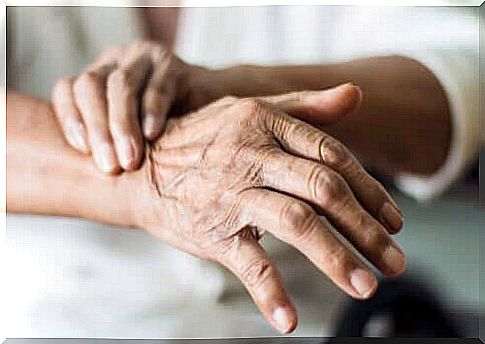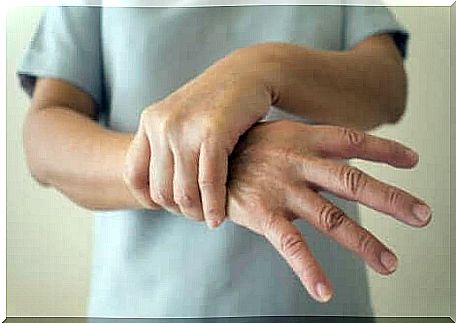Extrapyramidal Symptoms: What Are They?

Extrapyramidal symptoms are motor problems that are most often produced as a result of antipsychotics. It is a condition of the motor functions that occurs due to damage to the extrapyramidal system.
The extrapyramidal system manages your control over voluntary movements and muscles. It also handles automatic, instinctive and learned movements. This is why the problem with this system affects movements and posture.
The clearest example of extrapyramidal symptoms is Parkinson’s disease. In fact, any symptom that defines an extrapyramidal problem is also a symptom of Parkinson’s.

What causes extrapyramidal symptoms?
The following are some of the main symptoms that you may experience:
- Hypokinesia: a decrease in the speed and ability to perform voluntary movements. These types of movements start to require a lot of effort and become slow and clumsy.
- Hypertension: an increase in muscle tension. It is especially bad in the limbs. Some people also experience acute dystonia in the muscles of the face, neck and tongue.
- Akatisi: this symptom means that you are restless and can not sit still.
There are also lots of other motor symptoms that are linked to problems of this nature. These include:
- Hyperkinesia: involuntary movements such as ticks, spasms and twitching.
- Involuntary, rhythmically shaking back and forth. These can occur when lying down or maintaining a specific position for a long time.
- Parkinson’s movements: this involves having the head and neck bent forward and the elbows, knees and wrists bent as well.
- Amimi: the inability to make facial expressions. This is due to stiff muscles in the face.
- Abnormal gait: this usually shows up in short steps where the arms do not move back and forth. People with this problem have difficulty keeping their balance.
- Problems writing and speaking.
- Lack of postural reflexes and ability to make fast, automatic movements.

Treatment of the symptoms
Anticholinergic and dopaminergic drugs are mostly used when the treatment for some reason needs to be done quickly. In most cases, however, the patient must stop taking the medication that is causing the symptoms.
If the person is undergoing treatment with typical antipsychotics, a doctor will generally try to switch to one with fewer side effects.
When it comes to preventing extrapyramidal symptoms from antipsychotics before they occur , the main thing is to keep track of the doses.
You must also keep an eye out for negative reactions and react quickly to avoid further problems.
When it comes to treating facial tensions and changes in motor function , physiotherapy can be very helpful. This is even more true in the case of brain damage or damage to the extrapyramidal pathways.
Physiotherapy can be very helpful when it comes to rehabilitation. It has concrete benefits for their quality of life.








